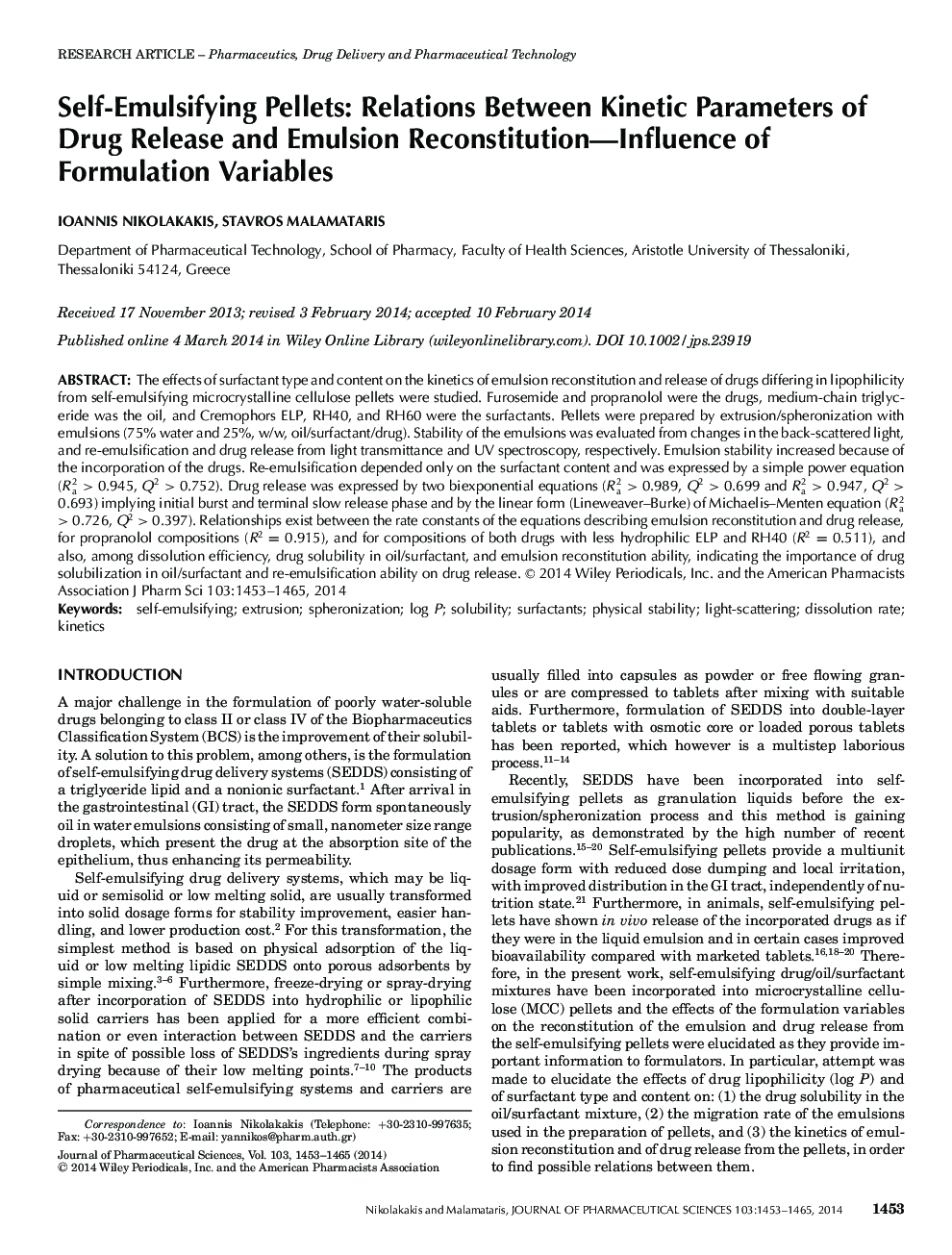| Article ID | Journal | Published Year | Pages | File Type |
|---|---|---|---|---|
| 10162356 | Journal of Pharmaceutical Sciences | 2014 | 13 Pages |
Abstract
The effects of surfactant type and content on the kinetics of emulsion reconstitution and release of drugs differing in lipophilicity from self-emulsifying microcrystalline cellulose pellets were studied. Furosemide and propranolol were the drugs, medium-chain triglyceride was the oil, and Cremophors ELP, RH40, and RH60 were the surfactants. Pellets were prepared by extrusion/spheronization with emulsions (75% water and 25%, w/w, oil/surfactant/drug). Stability of the emulsions was evaluated from changes in the back-scattered light, and re-emulsification and drug release from light transmittance and UV spectroscopy, respectively. Emulsion stability increased because of the incorporation of the drugs. Re-emulsification depended only on the surfactant content and was expressed by a simple power equation (Ra2 > 0.945, Q2 > 0.752). Drug release was expressed by two biexponential equations (Ra2 > 0.989, Q2 > 0.699 and Ra2 > 0.947, Q2 > 0.693) implying initial burst and terminal slow release phase and by the linear form (Lineweaver-Burke) of Michaelis-Menten equation (Ra2 > 0.726, Q2 > 0.397). Relationships exist between the rate constants of the equations describing emulsion reconstitution and drug release, for propranolol compositions (R2 = 0.915), and for compositions of both drugs with less hydrophilic ELP and RH40 (R2 = 0.511), and also, among dissolution efficiency, drug solubility in oil/surfactant, and emulsion reconstitution ability, indicating the importance of drug solubilization in oil/surfactant and re-emulsification ability on drug release. © 2014 Wiley Periodicals, Inc. and the American Pharmacists Association.
Keywords
Related Topics
Health Sciences
Pharmacology, Toxicology and Pharmaceutical Science
Drug Discovery
Authors
Ioannis Nikolakakis, Stavros Malamataris,
